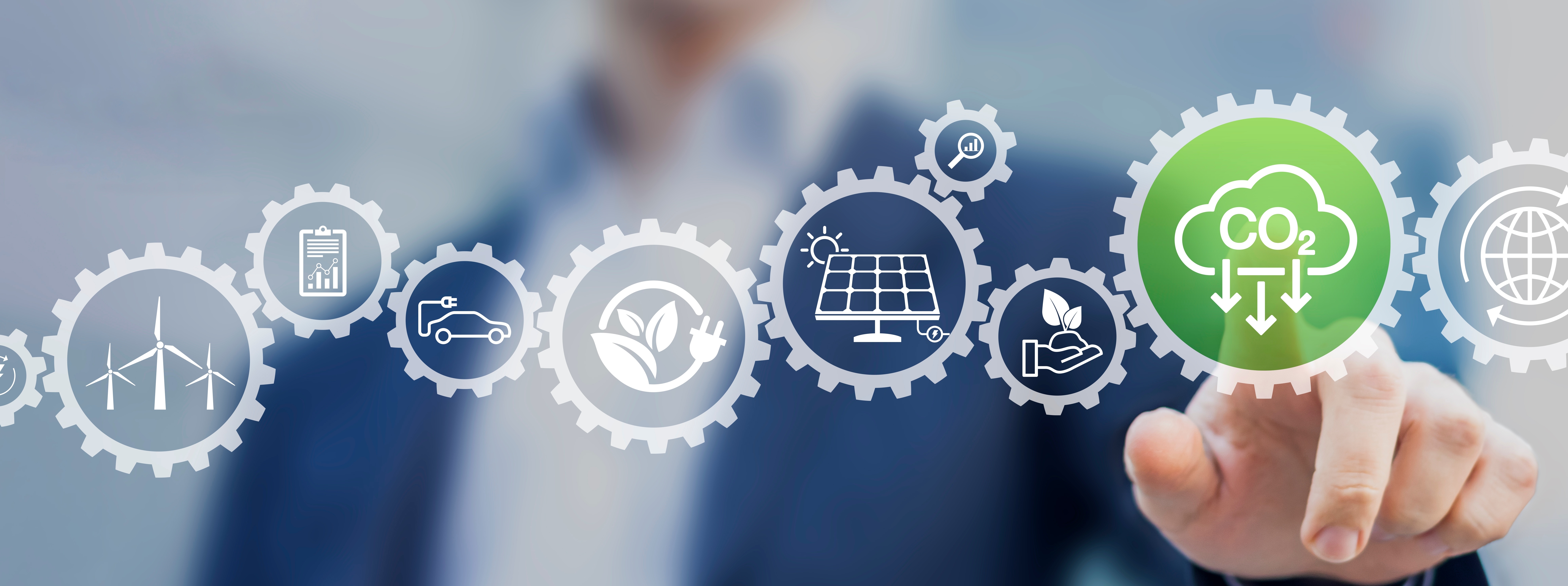The growth of sustainable solutions helped to keep the rise of global carbon dioxide emissions under
1% in 2022; however, this is still a rise. To meet our global net-zero commitments, our global greenhouse gas emissions (GHG) need to be reduced by 45% by 2030.
Despite strong international political support, without fast and positive action to reduce GHGs our global carbon budget — the tipping point for our climate — will be consumed in less than a decade. And so, a successful mitigation strategy must include means to reduce and/or remove GHGs from the atmosphere. According to the World Data Center, the energy sector, unsurprisingly, is responsible for 73% of GHG emissions, followed by agriculture and transportation. Though the water treatment sector is directly responsible for only 1%, water is used across all industries — from pure water in drug manufacturing to cooling tower water in power generation. Consequently, there are numerous opportunities to better manage this resource and reduce emissions.
In the water treatment sector alone, it is possible to improve the energy efficiency of water treatment processes by choosing the right treatment lines, optimizing processes and ensuring the efficiency of mechanical equipment. Additionally, anaerobic digestion can transform wastewater sludge into biogas to be used to generate clean electricity or heat, thereby reducing the reliance on external energy sources or even allowing self-sufficiency.
Nitrous oxide is a well-known by-product in wastewater treatment and has a global warming potential
265 times greater than CO2. This significant contribution to GHG emissions stresses the importance
of improved operations and treatment methods.
Across all sectors, the advancement of technology will continue to play a large mitigation role. Reducing our carbon emissions requires a comprehensive approach, including better water management practices and improved use of existing infrastructure for water treatment
and distribution.
If current trends continue, we will reach 62 gigatons (GT) of GHGs by 2030. Making the gap between actual emissions and what is needed to keep below 1.5°C more than 30 GT
— Intergovernmental Panel on Climate Change.
Rethinking resources: turning sewage into a source of green energy
Wastewater treatment plant produces twice as much energy as it consumes to help mitigate
climate change
To help lessen the impacts of climate change, cities and companies are investing in technology to optimize their infrastructure to reduce costs, while reducing emissions.
In the south of France, the metropolis of Montpellier is upgrading its wastewater treatment plant, Maera, aligned to the national Climate Air Energy strategy — launched to reduce carbon, boost
renewable energy production and preserve water resources nationwide.
The modernization of Maera includes an extension of the treatment capacity from 470,000 population equivalent (PE) to 695,000 PE, plus the implementation of a thermal sludge recovery system to
generate renewable energy.
By using the sludge from the water treatment to produce renewable energy, the plant will produce twice as much energy as it consumes with the excess energy used, among other things, to supply gas to 9,000 local homes and heat to more than 7,500 households.
The treatment capacity of Maera will be increased by 10% in the first year without enlarging the plant’s land area and with treatment processes that combine safety and durability: tertiary treatment that allows for a higher quality of discharge and technologies that are low in consumption. Once completed, the wastewater treatment plant will have the ability to cover 205% of its energy
consumption by 2031. The plant will also reduce its net CO2 emissions by more than half.
____________________________
Producing renewable energy with maximum efficiency: Membrane technology purifies raw biogas above 97% methane
Sludge and organic waste are no longer a matter of discharge when technologies like MemGas™ revalorize it into a valuable source of renewable energy: biogas.
MemGas uses membranes to separate methane and carbon dioxide compounds to concentrate the methane into biomethane — at more than 97% methane of renewable origin — which can be injected into the gas network for domestic or industrial use. As part of the Maera project, MemGas
will produce biomethane for the municipality at a low energy consumption with up to 99.5% efficiency.
_______________________________
Watch a video highlight on this climate change trend


